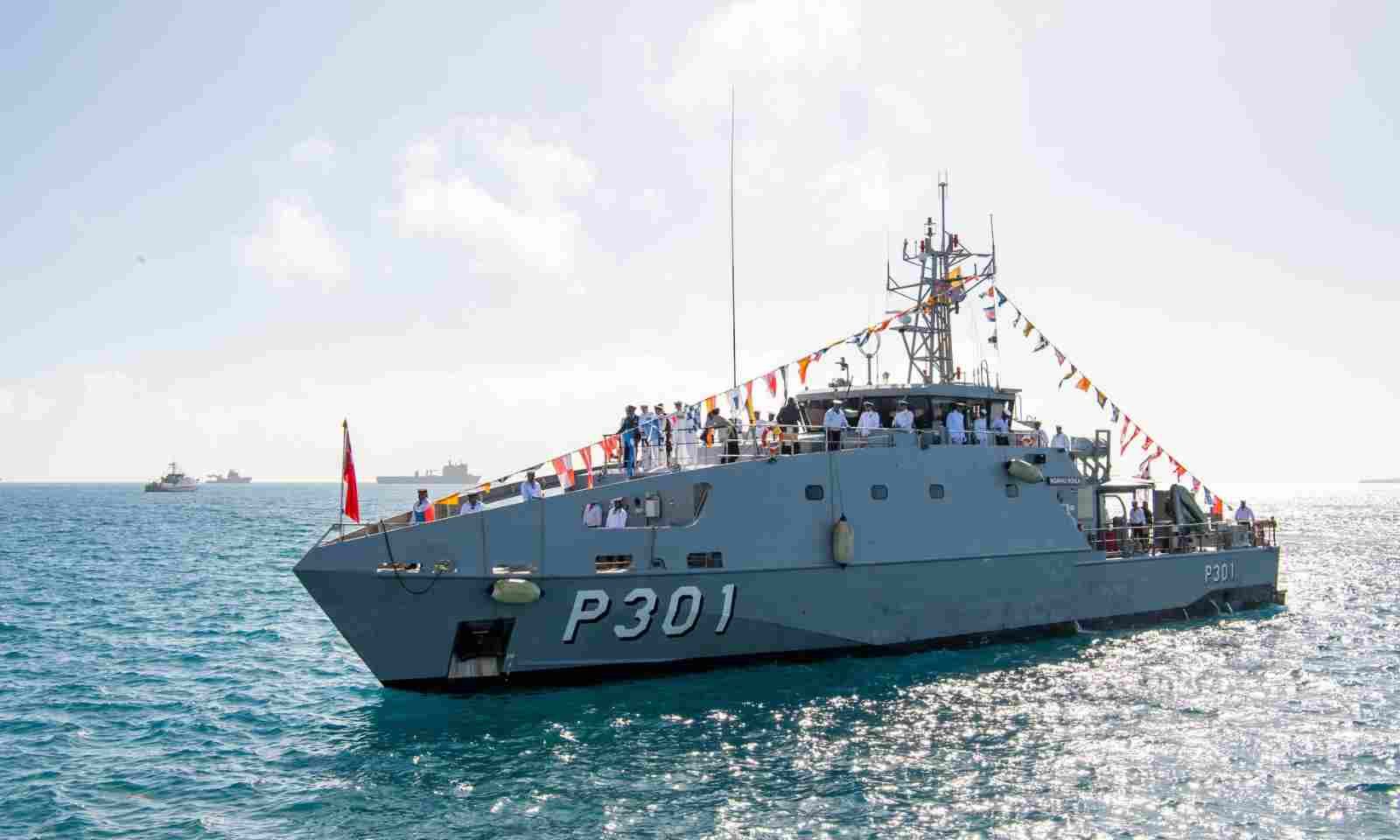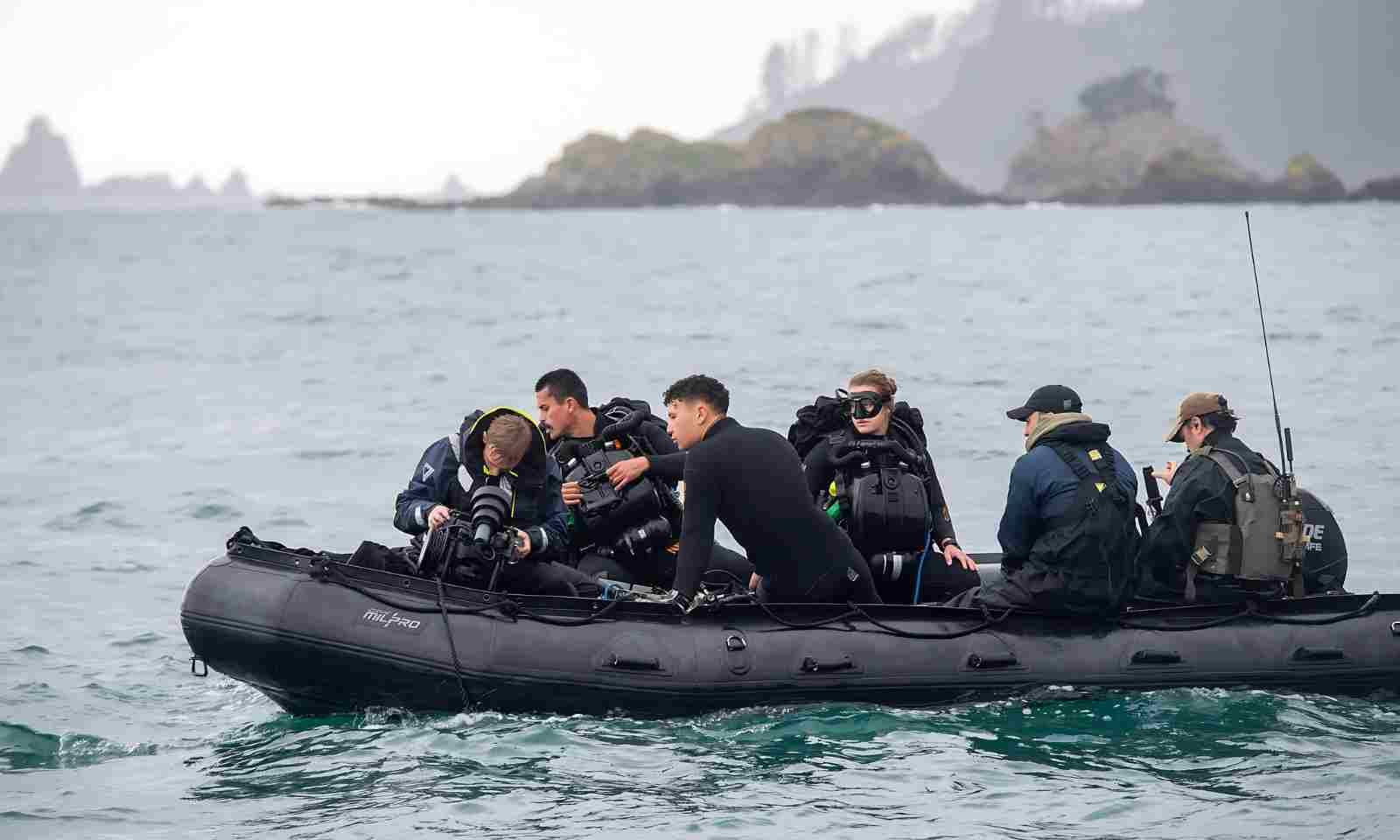

Photo/supplied
Manawanui sinking: Why a speedy cleanup is crucial amid the marine disaster
With the vessel's black box recovered, attention is turning to the cleanup efforts of HMNZS Manawanui in Sāmoa.
Speed is of the essence as salvage crews try to stop fuel leaking from the New Zealand naval ship that sunk off the coast of Sāmoa.
The 84.7-metre vessel was carrying out seafloor mapping of the southern coast of Upolu when it ran aground at the weekend.

Photo/Royal New Zealand Navy
The Defence Force says it has found the black box of the HMNZS Manawanui as the cleanup and salvage operation gets underway.
The voyage data recorder - the equivalent of an airplane's flight recorder - was recovered by dive teams assessing the stricken vessel.
The specialist dive and hydrographic vessel was on its third deployment, conducting a reef survey when it caught fire and sank.

HMNZS Manawanui represented the navy at the Tongan Navy's 50th anniversary and King Tupou's VI's birthday celebrations in Nuku'alofa in July. Photo/RNZN
Deep Dive Division founder Pauli Tua Karalus has carried out scientific research in the area and says the accident puts the vibrant coral ecosystem at serious risk.
He told Pacific Mornings' William Terite the situation is "very serious".
"You know, obviously very detrimental to our own navy but also to the ecosystems which are over there in the southern coast of Upolu."
It’s the first unintentional sinking of a New Zealand naval vessel since World War II, the navy said.
The HMNZS Manawanui, built in the early 2000s, was purchased in 2018 for around $100 million.
The ship was designed to “survey harbours and approaches prior to larger support ships landing support equipment and personnel whether for combat or disaster relief", the navy, Te Taua Moana, said.
A key concern for the Sāmoan and New Zealand authorities is the environmental effects and the need for a swift and successful cleanup.
But they will also need to clean up any crushed coral and contaminated sediment around the reef and wreck as quickly as possible, as it may have been exposed to the ship's anti-fouling paint.
In calm weather this would be possible as it's shallow on the reef crest, the navy said.
Prime Minister Christopher Luxon has said that "environment spill kits" have been sent to Sāmoa to help mitigate and minimise the impacts.
University of Waikato professor of coastal science Chris Battershill says the fuel oil on board the Manawanui is lighter, that is, its most toxic short-chain hydrocarbons will likely evaporate with wave action.
But if the remaining slick washes up on beaches, it will be harder to remove, he said.
"During low tides, it will be running onto the reef, likely killing off corals and fish in a swath moving inshore or driven by wind and currents.
"The salvage crew's first focus will probably be on mitigating fuel leaks."

Photo/Royal New Zealand Navy
The navy says the 72 crew and passengers have returned home.
Business owners and conservationists fear a potential environmental impact of the incident, which occurred in waters off Sāmoa’s most populated island.
While media reports have stated there is an oil spill, the Sāmoan government says this is not the case.
Karalus says, "experience tells me that, yes, there will be some leakage over time, even if it's held within the vessel over the period, there'll be degradation of the metals of the superstructure and then eventually it will leak.
"It's just a matter of time really at the moment. It's probably been held together quite well. But yeah, there will be certain fuel storage areas within the vessel itself which will be compromised and you know people on the ground, the villagers are saying that they can smell it, you can see it, that's evidence.
"We're into spring and between October and November, it's a time when an important species called the palola worm actually starts to spawn. And for coastal villages and communities, it's a time when they can go out and gather and bottle them up and sell them.
"It's what Professor Chris Battershill said, it's like the caviar of the South Pacific. But you know, that's one species. And when that's spawn, it also sets off other series of events.
"A typical crab, endemic crab, the maliord, which will come out during that time as well, and into the ocean. And then you've got sharks and other creatures which will come during this time of spawning.
"So unfortunately, the timing is a bit off for the ecosystems, for the animals, when they'll come to procreate, regenerate, and having something catastrophic like a ship being wrecked and the spills happening there, it's not good for the ecosystem."
The Manawanui's sinking is a marine disaster, but it arguably poses a lesser risk than the oil spill caused by the container ship MV Rena, which ran aground near the Astrolabe Reef off Tauranga in 2011.
Battershill says a speedy cleanup in Sāmoa can make all the difference for the environmental recovery after ships ground on reefs and sometimes sink.
Karalus says logistically, it's going to be hard.
"It is on the southern coast, the main port is in Apia. We will have the vessels there, you know, things like tugboats which will be used during the MV Rena to go around, and dive teams to grab things like containers which we've seen floating in the ocean at this time.
"It's probably best to grab them when they are floating and hold them before they hit the coastline and rip up and shred. Obviously, it's a lot harder clean up, but logistically it is a tough operation. It's in an isolated spot as well."

An oil spill was caused by the container ship MV Rena, which ran aground near the Astrolabe Reef off Tauranga in 2011. Photo/supplied


